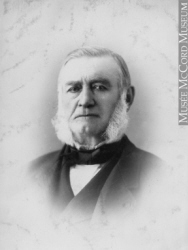

|
|
|||
|
|
|||
|
|
Lucy Maud's Historic Places

In celebration of the one hundred years since the publication of the famous novel, Anne of Green Gables, it is an opportunity to highlight those places in each county of Prince Edward Island associated with the life of Lucy Maud Montgomery which are listed on both the Prince Edward Island Register of Historic Places and the Canadian Register of Historic Places. The following are arranged in chronological order as they influenced Lucy Maud's life. Each place is introduced by a quotation from one of the chapters of Anne of Green Gables or from another of her writings or personal journals. This year, visit these places and get to know one of our Island's greatest citizens.
The joy of sincere work and worthy aspiration and congenial friendship were to be hers; nothing could rob her of her birthright of fancy or her ideal world of dreams. - Chapter 38
Lucy Maud's story begins in New London, in a small gable roofed house (today the L.M. Montgomery Birthplace at the intersection of Routes 6 and 20). She was born here on November 30, 1874 to Hugh and Clara (Macneill) Montgomery. It was the sudden passing of her mother, when Lucy was only two, that would transform her life. Her distraught father sent her to live with her maternal grandparents on a farm in nearby Cavendish. There, she would develop a love of reading and a unique ability to use her imagination which would enhance her creative writing in later life.
All things great are wound up with all things little. At first glance it might not seem that the decision of a certain Canadian Premier to include Prince Edward Island in a political tour could have much or anything to do with the fortunes of little Anne Shirley at Green Gables. But it had.- Chapter 18
Not all of Maud's grandparents lived in isolation on the farm. Her other grandfather, Donald Montgomery (1808-1893), was a Canadian Senator and provided her with a connection to a wider world. She would comment in The Alpine Path that he had a "stately presence and handsome face". He had been born at Fox Point, near Princetown, PEI. When the Island became the seventh province of Canada in 1873, he was appointed as a Conservative to the Senate in Ottawa. In one of his last campaigns, the prime minister, Sir John A. Macdonald, came to the Island and met Senator Montgomery and his grand-daughter at the Kensington Railway Station on Monday, August 11, 1890. The PM's wife, Lady Agnes Macdonald, gave Maud a flower from her official bouquet - which she promptly pasted into her scrapbook, calling it a "souvenir of my first ride on a train." She would later travel with him to the Canadian West to see her father in Prince Albert, in what is today, Saskatchewan.
Montgomery had always wanted to pursue higher education. In 1892, she began studying for the Entrance Examination to Charlottetown's Prince of Wales College. She began her studies the following year and completed the requirements necessary to achieve her teacher's licence. Her first job was at the one-room school in Bideford where she taught from 1894-95. She boarded in the community with the family of the Methodist minister. Today, this house is well preserved as the Bideford Parsonage Museum. You can visit the house and see the room where she once stayed.
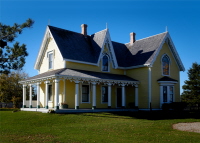
The notable incident of the liniment cake happened when I was teaching school in Bideford and boarding at the Methodist parsonage there. Its charming mistress flavoured a layer cake with anodyne liniment one day. Never shall I forget the taste of that cake and the fun we had over it, for the mistake was not discovered until tea time. A strange minister was there to tea that night. He ate every crumb of his piece of cake. What he thought of it we never discovered. Possibly, he imagined it was simply some new-fangled flavouring. - L.M. Montgomery, "The Alpine Path: The Story of My Career", 1917
The trustees have hired a new teacher and it's a lady. Her name is Muriel Stacy. Isn't that a romantic name? Mrs. Lynde says they've never had a female teacher in Avonlea before and she thinks it is a dangerous innovation. But, I think it will be splendid to have a lady teacher, and I really don't see how I'm going to live through the two weeks before school begins. I'm so impatient to see her.- Chapter 22
After taking a year away from teaching to become a student of literature at Halifax's Dalhousie University, she returned to the Island to become the teacher at Belmont and Lower Bedeque from 1897-98. Today, the L.M. Montgomery Lower Bedeque School has been restored and is open each summer for visitors. This was the last school she taught in on the Island. She became disillusioned with teaching and increasingly more passionate about her writing. In her personal life, it was a time of turmoil. She becomes engaged - then breaks it off. She loses her maternal grandfather, Alexander Macneill in 1898 and her father, in 1900. She returns to Cavendish to live with her maternal grandmother, Lucy Woolner Macneill, and, encouraged by the publication of her poems and short stories, throws herself into her writing.
I really think I'd like to be a minister's wife when I grow up, Marilla. A minister mightn't mind my red hair because he wouldn't be thinking of such worldly things.- Chapter 22

In 1903, a person came into her life who would alter her future forever. The Rev. Ewan Macdonald (1870-1943) who had been born at Bellevue, PEI, became the new minister of the Cavendish Presbyterian (now United) Church. Within three years, they would be engaged. It was during this courtship that Maud began writing her classic Anne of Green Gables in 1905. It would be rejected by four publishers and stuffed in a hatbox until 1907, when she took it out, revised it, and sent it to L.C. Page of Boston. It was accepted with the caveat that she write more books about Anne. Her success was to initially garner her a royalty of a mere 9 cents per copy!
"Oh, Miss Cuthbert, did you really say that perhaps you would let me stay at Green Gables?" she said, in a breathless whisper, as if speaking aloud might shatter the glorious possibility, "Did you really say it? Or did I only imagine that you did?" - Chapter 6

Anne of Green Gables became an instant success when it was first released in June of 1908. In five months, it went through six editions and sold over 19,000 copies. When the Prince Edward Island National Park was created in 1936 at Cavendish, a former home once owned by one of Maud's relatives was salvaged to become the fictional Green Gables House. Today, this is a destination attraction in the PEI National Park.
Prissy Andrews is going to recite 'Curfew Must Not Ring Tonight.' That is such a good moral piece, Marilla, I'm sure it would do me lots of good to hear it. And the choir are going to sing four lovely pathetic songs that are pretty near as good as hymns.- Chapter 19
In 1907, while she was busy revising her Anne manuscript, Maud was also using her talents to pen a poem in homage to her Island homeland. The Island Hymn would be set to music in 1908 by Lawrence Watson (1860-1925), who lived in Charlottetown at the Dundas Terrace and was choir director at St. Peter's Anglican Cathedral. The tone was optimistic for the promise of a new century, but the message remains "a good moral piece"... so, "sing God save the land We love so well."
Earl Grey shook hands with me and began at once to talk about 'Anne' and the pleasure it had given him.- Journals of L.M. Montgomery, 1910
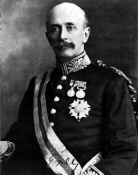

The impact of the novel was attracting the attention of other writers such as Mark Twain and even Canada's governor general, the Earl Grey. In 1910, when Earl Grey was planning a visit to the Island, he insisted that he meet Maud at the Sir Andrew Macphail Homestead in Orwell. When that day came, on Friday, September 16, she found it more than amusing. She confided to her journal that the governor general wanted her to leave the house with him and go for a walk to discuss the book. "We went through the orchard and followed a little winding path past the trees until we came to a small white building... I could not say to Earl Grey 'This is the Macphail water closet' - although that is what it was!" The two sat down on the steps of the building - blocking anyone's chance of using the facilities! She would write: "I was suffering so acutely from a supressed desire to laugh that I hardly knew what I was saying." Today, the homestead offers more modern facilities to visitors.
Bertram gave her a diamond ring and a ruby necklace and told her they would go to Europe for a wedding tour, for he was immensely wealthy. But then, alas, shadows began to darken over their path.- Chapter 26
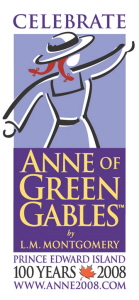
Maud's maternal grandmother with whom she had spent so much of her life passed away in 1911. One aspect of her life had concluded and another was about to begin. In July, she married the Rev. Ewan Macdonald in the parlour of Silver Bush, the house owned by her uncle and aunt, John and Annie Campbell, at Park Corner. This well preserved Gothic Revival house was a favourite of Maud's and today is home to the Anne of Green Gables Museum. The couple would honeymoon in Britain before moving to Leaskdale, Ontario, where Ewan took up new pastoral duties after his last Island pastoral charge in O'Leary and Bloomfield. Maud would raise her family in Ontario and write the rest of her many novels there. The family would, however, make several visits back to her Island over the years.
Mrs. Allan said we ought always to try to influence other people for good. She talked so nice about everything. I never knew before that religion was such a cheerful thing. I always thought it was kind of melancholy, but Mrs. Allan isn't, and I'd like to be a Christian if I could be one like her. - Chapter 21
During the early 20th century, when church union was debated among Canada's Methodist, Presbyterian, and Congregationalist denominations, the Macdonalds' were among those Presbyterians who elected to remain with the continuing Presbyterian Church in Canada. When the United Church of Canada was formed in 1925, those Presbyterians in Malpeque, PEI, who remained with the Presbyterian church built a new building in 1927 dedicated to the memory of Dr. Keir, a missionary to the area. The Macdonalds' donated the communion table. Today, this former church is now the Keir Memorial Museum and is open each summer for visitors.
There's a white lady walks along the brook just about this time of night and wrings her hands and utters wailing cries. She appears when there is to be a death in the family.- Chapter 20

Maud's remarkable literary career flourished throughout the 1920s and 1930s. In 1935, she was honoured by becoming a Companion of the Order of the British Empire, the same year Ewan retired from ministry. In 1936, Green Gables was recognized as part of the new Prince Edward Island National Park. The health of the couple deteriorated in the later years of the decade and Maud passed away on April 24, 1942 in Toronto. She rests on her beloved Island in the Cavendish Cemetery. Today, fans of her books still visit her gravesite.
For further reading:
The L.M. Montgomery Institute at the University of Prince Edward Island.
The L.M. Montgomery Research Centre at the University of Guelph.
Picturing a Canadian Life: L.M. Montgomery's Personal Scrapbooks and Book Covers.
L.M. Montgomery Online
L.M. Mongomery's Cavendish Home
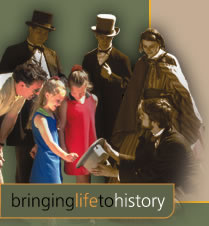

|

|

